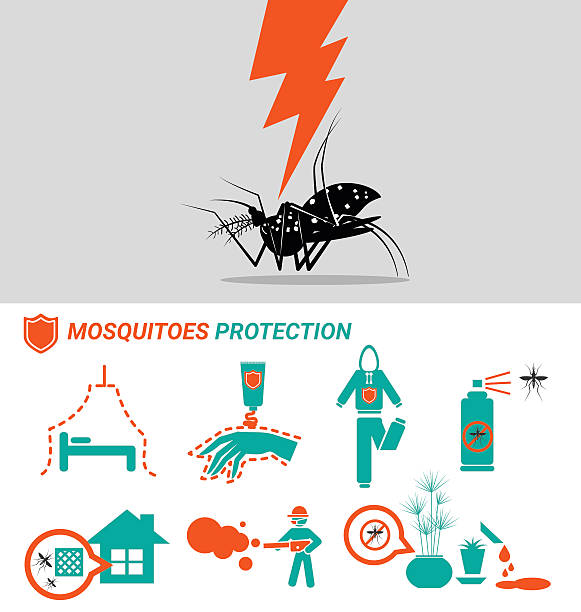Disease Vectors and Climate Change
A disease vector is a living agent that carries an infectious pathogen. This organism then transfers the disease to another living organism. Disease vectors are an important part of public health. Read on to learn more about disease vectors. This article outlines their biology, ecology, geographic distribution, and risk factors. You will also learn more about the role of these agents in the transmission of disease.
Pathogen-definitive host biology
Disease vectors are essential components of the transmission cycle of some diseases. They help pathogens move from one host to another, and many insects and ticks are important vectors. They acquire a pathogen from their host and develop it in their body, before transmitting it to another host. Once transferred, these arthropods may not multiply the pathogen.
The transmission of disease is influenced by changes in the habitat of vectors. In order to control the spread of disease, we must understand the behavior of disease vectors. Ticks, for example, can transmit B. burgdorferi and TBEV between a large number of mammalian hosts. This makes ticks a vulnerable target for disease control and management efforts.
The evolution of pathogens can vary dramatically among hosts. Many species are multi-host pathogens, while others maintain a sylvatic transmission cycle between two hosts. About 60% of all known human pathogens originate in animals. Some of these enter into human populations as zoonotic pathogens (those that infect humans).
The ability to infect multiple hosts increases pathogen persistence, but this capacity is not always adaptive. Broad host ranges come with several ecological trade-offs. Single-host pathogens typically evolve intermediate virulence levels in their host. However, multi-host pathogens often exhibit a higher level of virulence than single-host pathogens. This means that the optimal virulence level for a pathogen is likely different in each host, depending on the contribution each host makes to its fitness.
Ecology
Infectious diseases caused by vectors are a global problem. The changing climate may increase the risk of vector-borne diseases, so effective tools for vector control are essential. This article reviews the chemical ecology of disease vectors and discusses potential control methods. It is based on key note lectures presented at the 25th ISCE conference in Neuchatel, Switzerland.
This field has recently received a lot of attention, with studies on malaria vectors using remote sensing technology. The authors recommend a step-wise approach that involves field studies to define environmental determinants of vector abundance and presence. This includes creating a database of landscape elements to determine where vectors are most abundant. The next step is to develop and test prediction models of vector abundance based on these data.
This department has conducted several studies, including studies on Culex pipiens and the genetic vector control program. These studies have provided essential knowledge that can help in developing effective integrated pest management programs. In addition, new methods of mosquito trapping are being developed to improve surveillance programs. Members of the department are actively involved in graduate student and postdoctoral training programs. They also publish findings to the scientific community.
The Multi-State Project NE1043 will investigate the biology and ecology of disease vectors and the management of these pests. This project was initiated in 2004 and will run from August 1, 2009 to June 30, 2014. It is chaired by Randy Gaugler and includes representatives from 11 Agricultural Experiment Stations.
Geographic distribution
Climate influences the geographic distribution of disease vectors, which are insects or other animals that carry or spread pathogens that cause illness. Several factors affect the distribution of vector populations, including climate variability, human responses to disease risk, and pest control practices. The seasonal and daily variations in climate may change the distribution of vectors and the prevalence of particular diseases.
The geographic distribution of disease vectors is important for understanding the spread of a disease. In North America, many vector-borne diseases are present, including Lyme disease, dengue fever, West Nile virus disease, and Rocky Mountain spotted fever. These diseases are serious threats to people and the environment, and they must be controlled.
The extent and intensity of transmission of dengue and other diseases is determined by the distribution of disease vectors. Climate change affects disease vectors, and increased numbers of Aedes mosquitoes in some areas may increase the risk of transmission of DENV. However, these changes may not be consistent across the globe. Human and ecological factors are the driving factors in the transmission and distribution of disease vectors.
Although these findings are preliminary, they could contribute to the development of reliable disease vector control measures. They could also promote increased public awareness about vector-borne diseases. They may also lead to improved prevention and control practices in dengue-endemic countries.
Risks
Disease vectors are often a major source of public health risks. Their prevalence, transmission rates, and impact on human health are all factors in risk assessment. For example, the number of generations in a vector season and overlap between populations can affect the spread of diseases. However, reducing the number of infection generations can reduce disease transmission.
In North America alone, disease vectors are responsible for the transmission of dozens of infectious diseases. These include dengue fever, Rocky Mountain spotted fever, West Nile virus disease, and Lyme disease. Increasingly, climate change is increasing the conditions that disease vectors thrive in. As a result, the risk of developing one of these illnesses is increasing globally.
A recent study showed that human behavior and socioeconomic factors may play a role in limiting the spread of disease vectors. However, these measures are expensive and difficult to apply on a large scale. More accurate risk estimates are needed to target interventions. Further, it is critical to determine the spatial and demographic heterogeneity of disease vectors to develop effective public health interventions.
The climate also affects the distribution of disease vectors. Climate-induced changes in animal populations and human behaviors may increase the risk of disease transmission in North America. However, this risk can be reduced by taking steps to control vector populations and by increasing indoor time.
Control
The failure to control disease vectors has led to epidemics of many diseases. A lack of funding for vector control is one of the main contributors to VBD resurgences. The World Health Organization (WHO) has advocated the control of disease vectors to combat these epidemics. It has also recommended the use of malaria drugs like MDA to eliminate microfilariae from human blood.
Insecticides are one of the primary tools in vector control. However, there are other methods as well, including changing the habitat of the vector and removing its food source. Combining these approaches into an integrated pest management strategy can provide effective control while reducing the effects of pesticides on the environment. Pesticides alone can lead to the development of resistance in vectors, and they may also harm non-target organisms.
Mosquitoes are among the primary vectors of many diseases. Several species of mosquito are responsible for transmitting diseases, though not all are as prolific in human habitats or as effective at transmission. Most diseases transmitted by mosquitoes have no specific treatment or vaccine. Only yellow fever is protected against by a vaccine, and vector control is essential in reducing disease transmission.
Biocontrol agents can be very effective in reducing the transmission rate of vector-borne diseases. However, in the long term, these agents can reduce the incidence of host disease and reduce the density of disease vectors. However, there is still a need to address the underlying constraints of vector-human contact.
Prevention
Prevention of disease vectors requires a comprehensive approach. Health ministry managers should take steps to prevent the spread of disease by controlling the distribution of disease-carrying insects and developing effective control strategies. Vector control strategies can save lives and reduce health costs. These strategies are not only important for human health but also for the environment.
Disease vectors are spread by mosquitoes, ticks, and other insects. They carry diseases such as West Nile Virus, malaria, and several types of encephalitis. Ticks can also transmit Ehrlichiosis and Lyme disease. Other insects such as cockroaches can carry Salmonella food poisoning and E. coli. Other animals that may be vectors include birds, rats, and mice.
In order to reduce the risk of disease vectors, individuals should follow best hygiene practices. They should wear full-length clothing to avoid mosquito bites. Insect repellents and essential oils can also be used to keep mosquitoes away from humans. The environment should be kept clear of standing water, overgrown grass and leaves, and debris.
Public health organizations should also promote the prevention of disease vectors. They can mobilize community members and householders to reduce mosquito breeding sites. They can also implement measures such as clean roads and drains.



